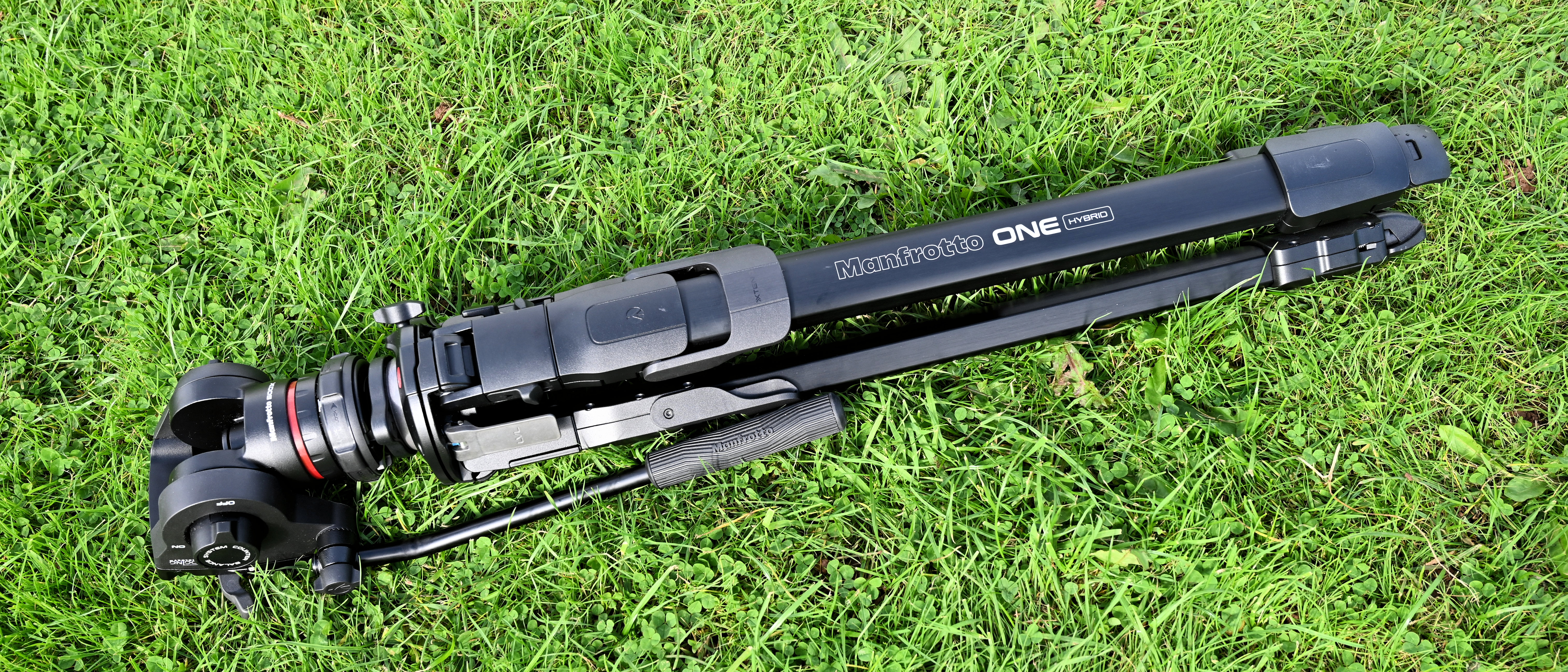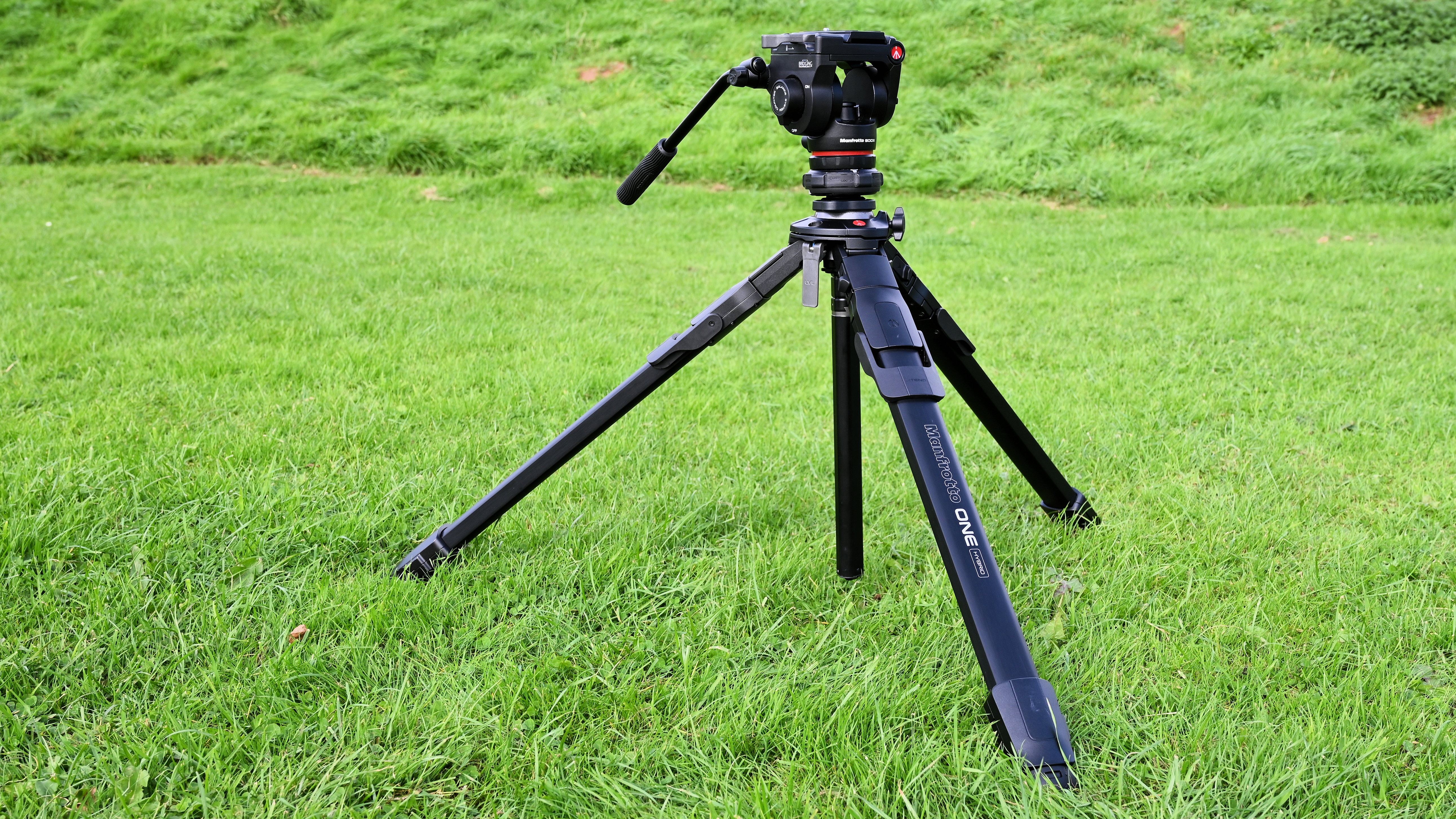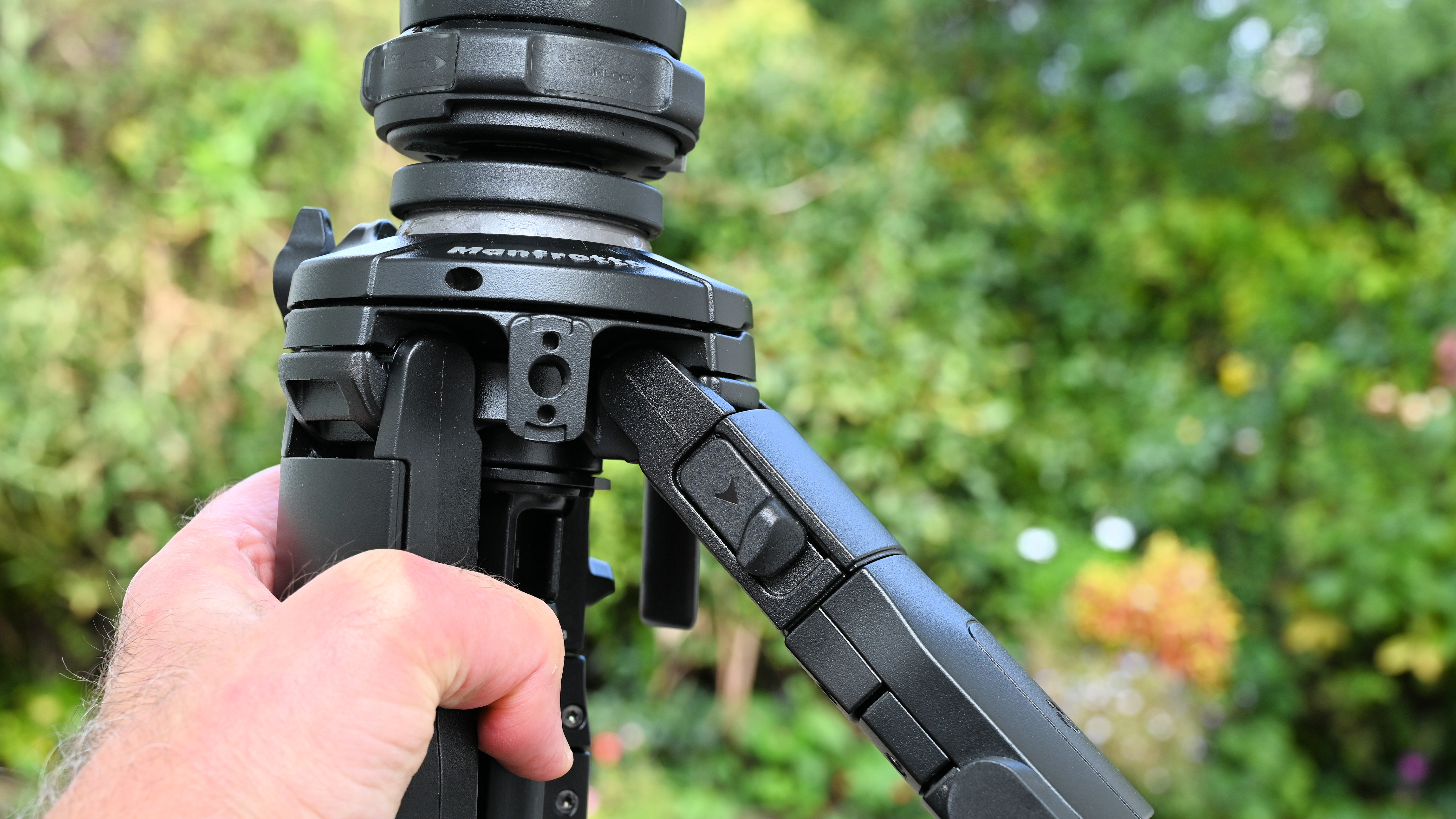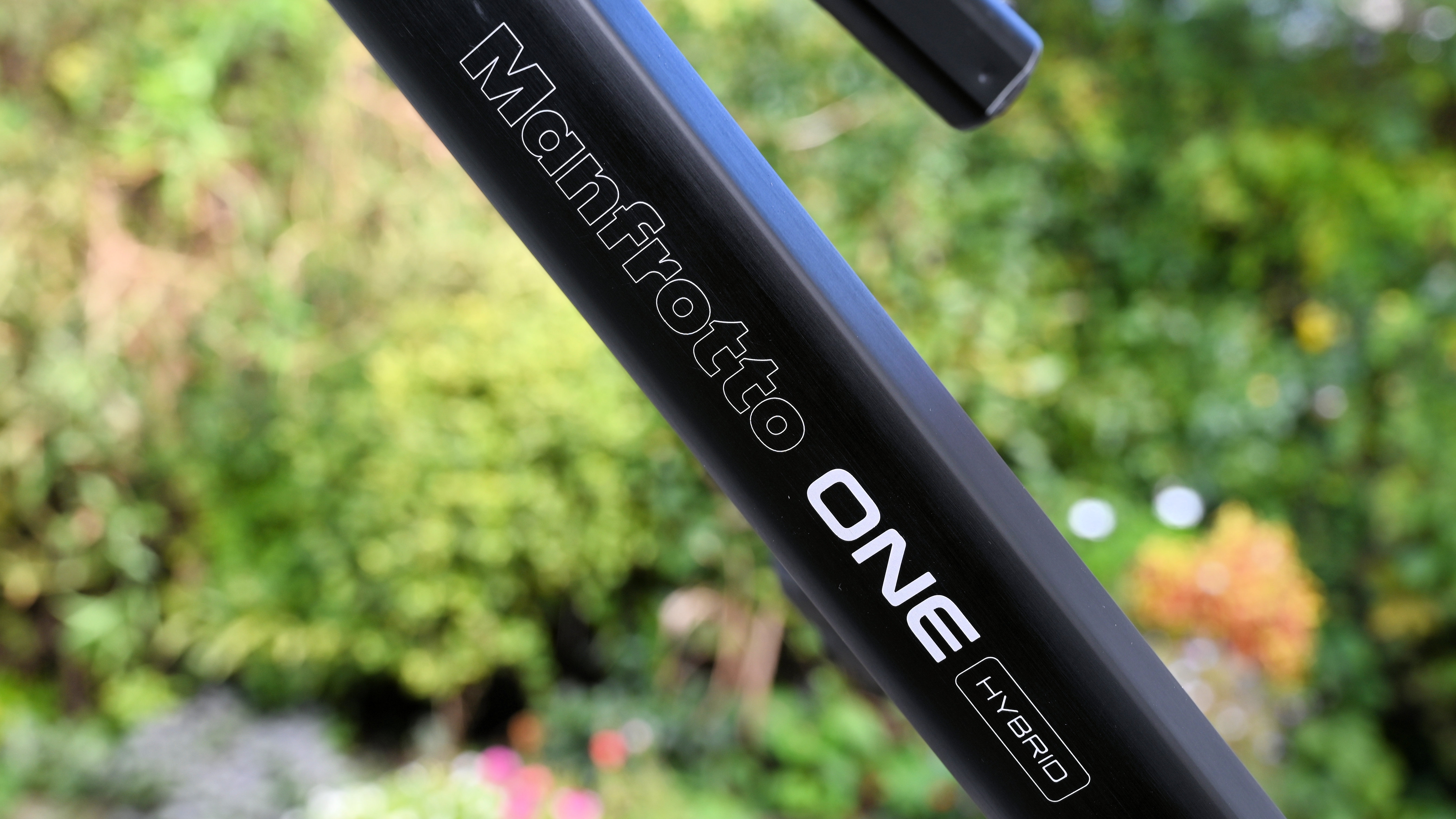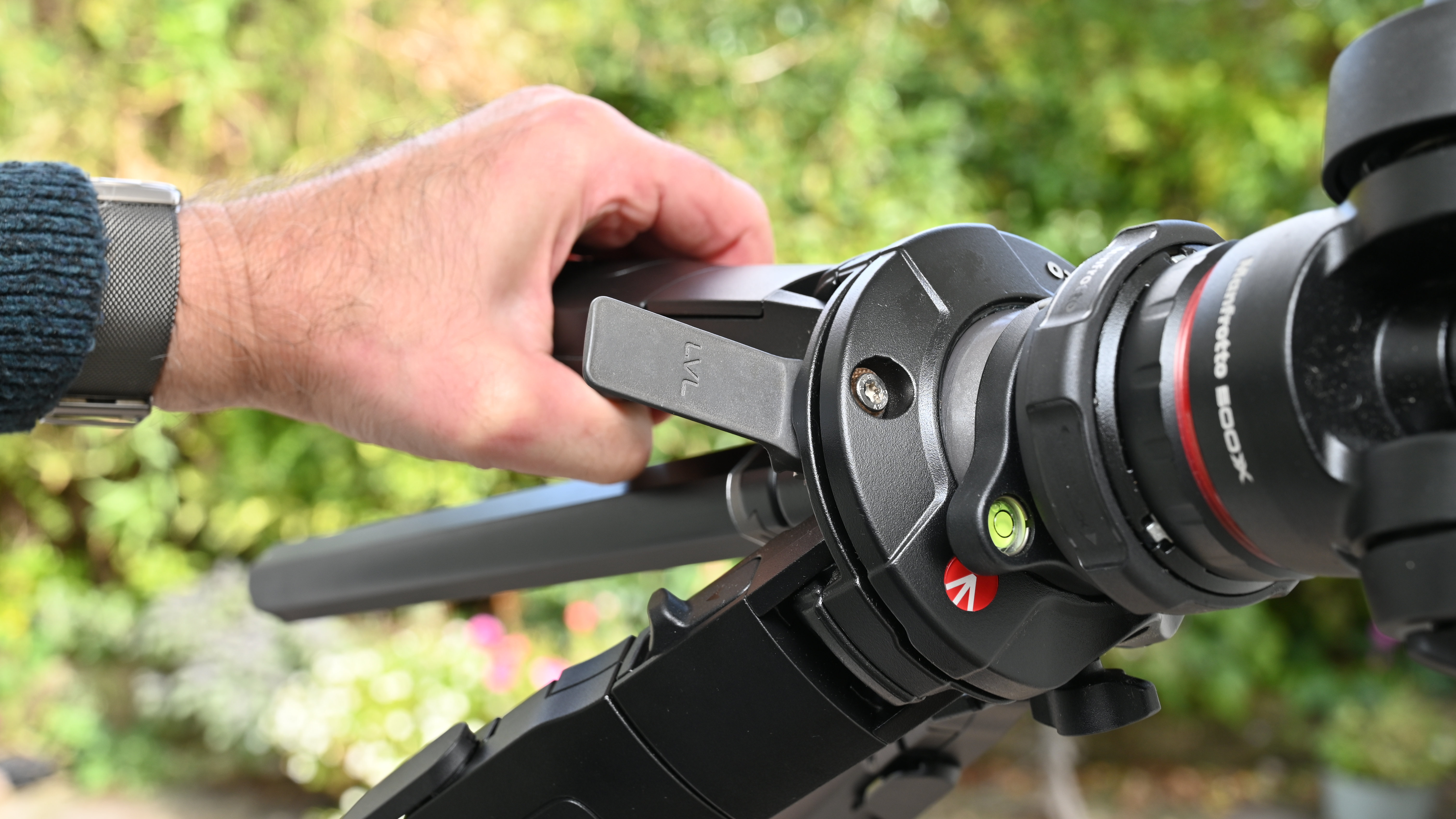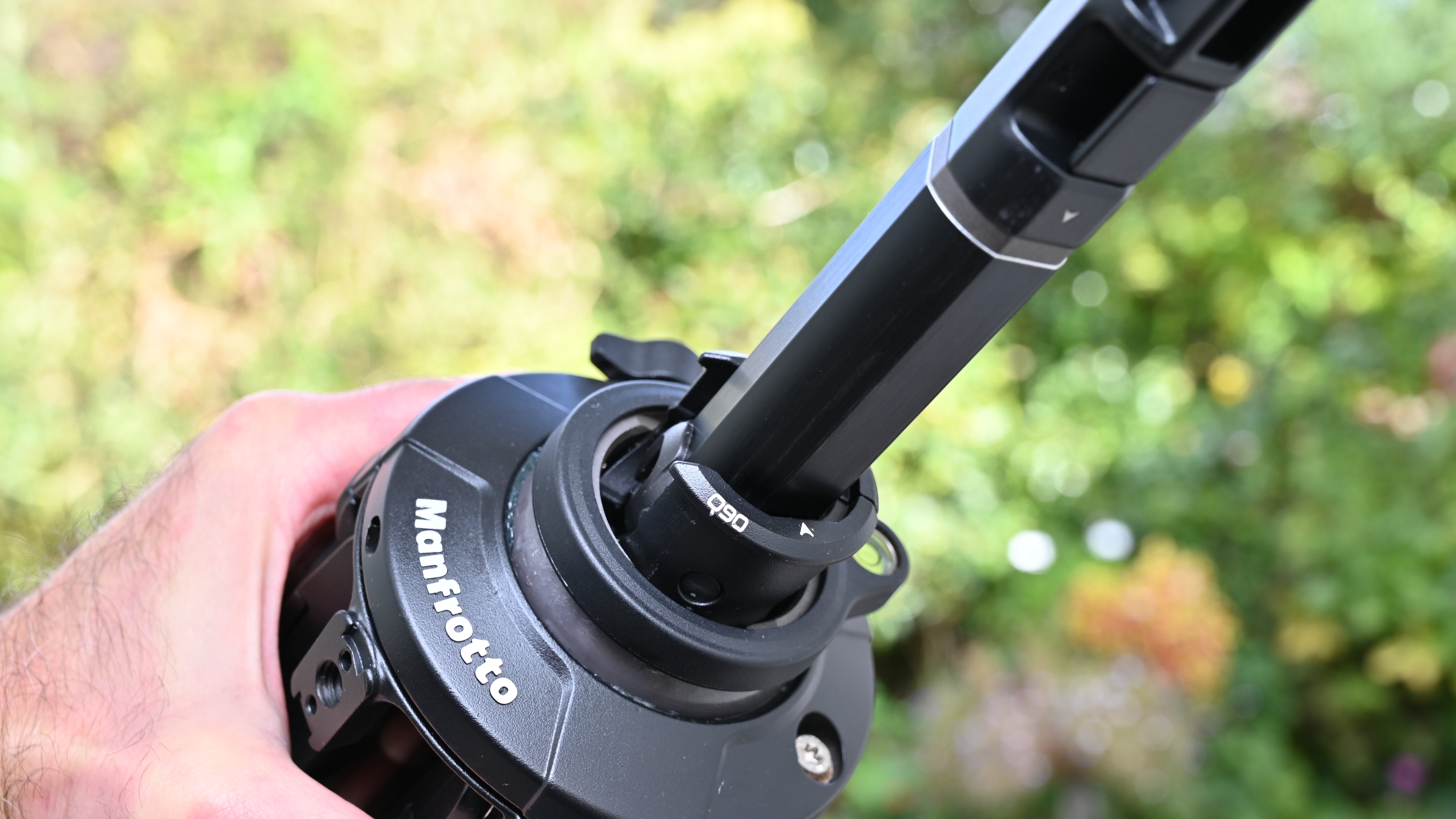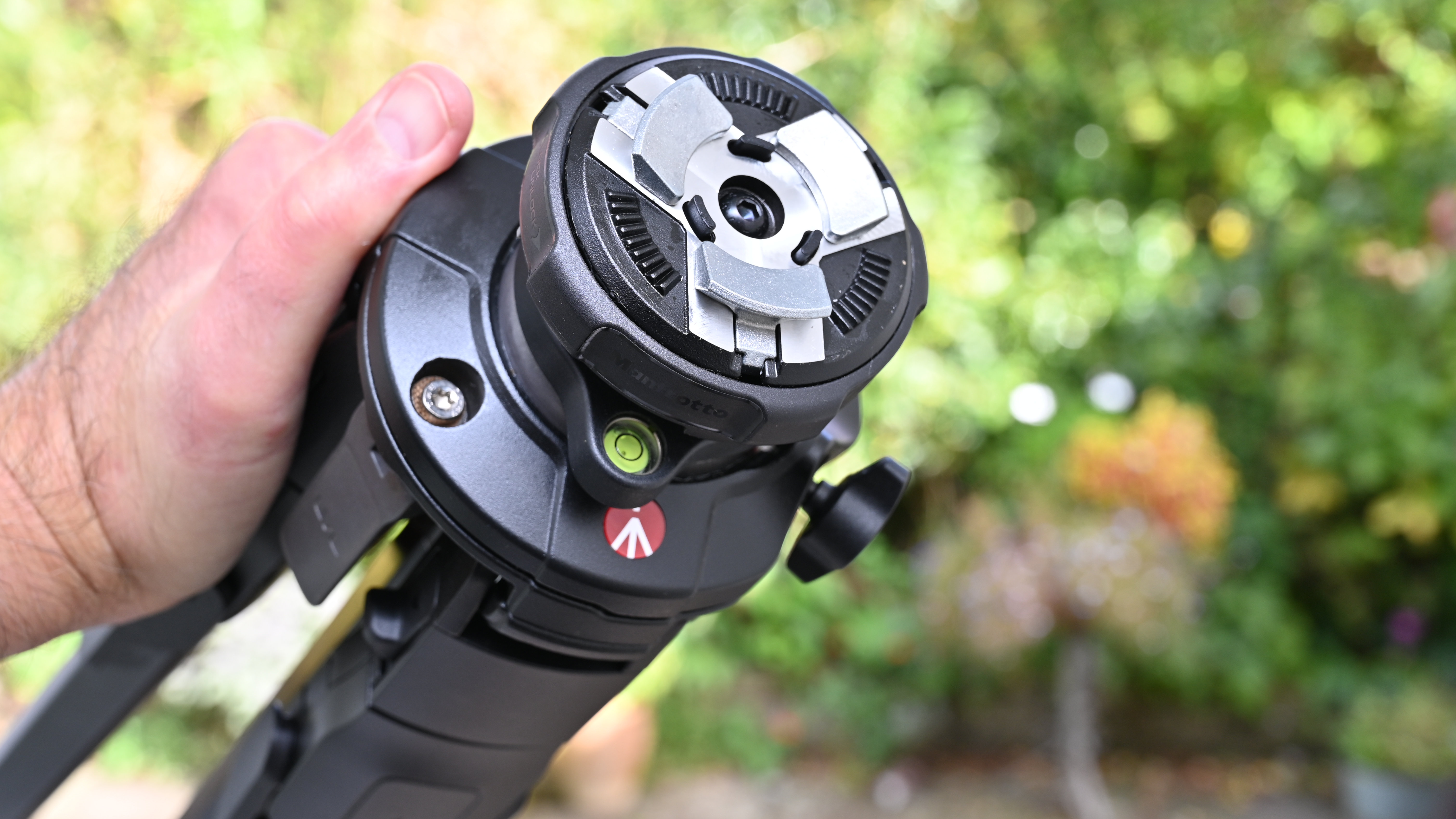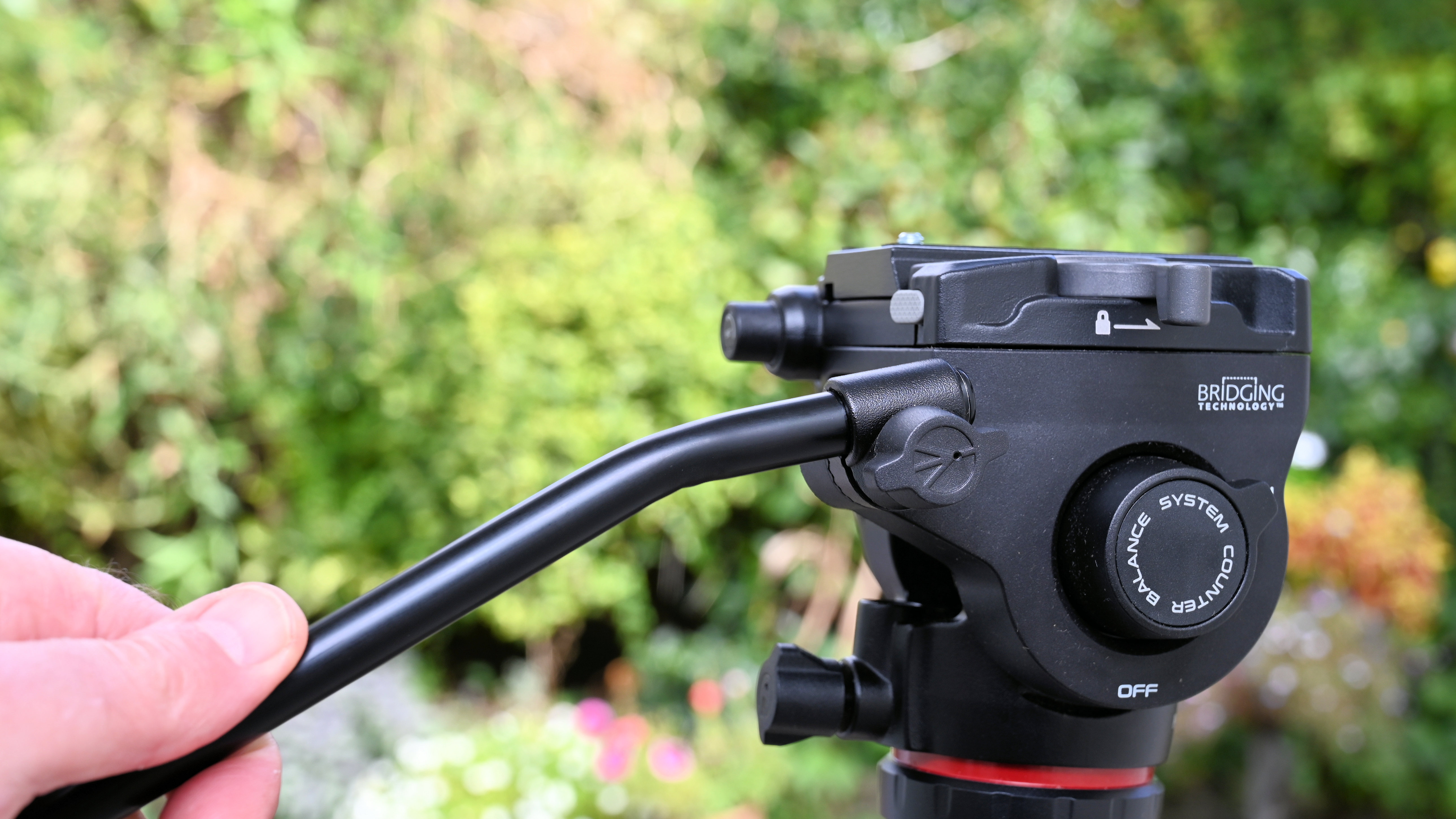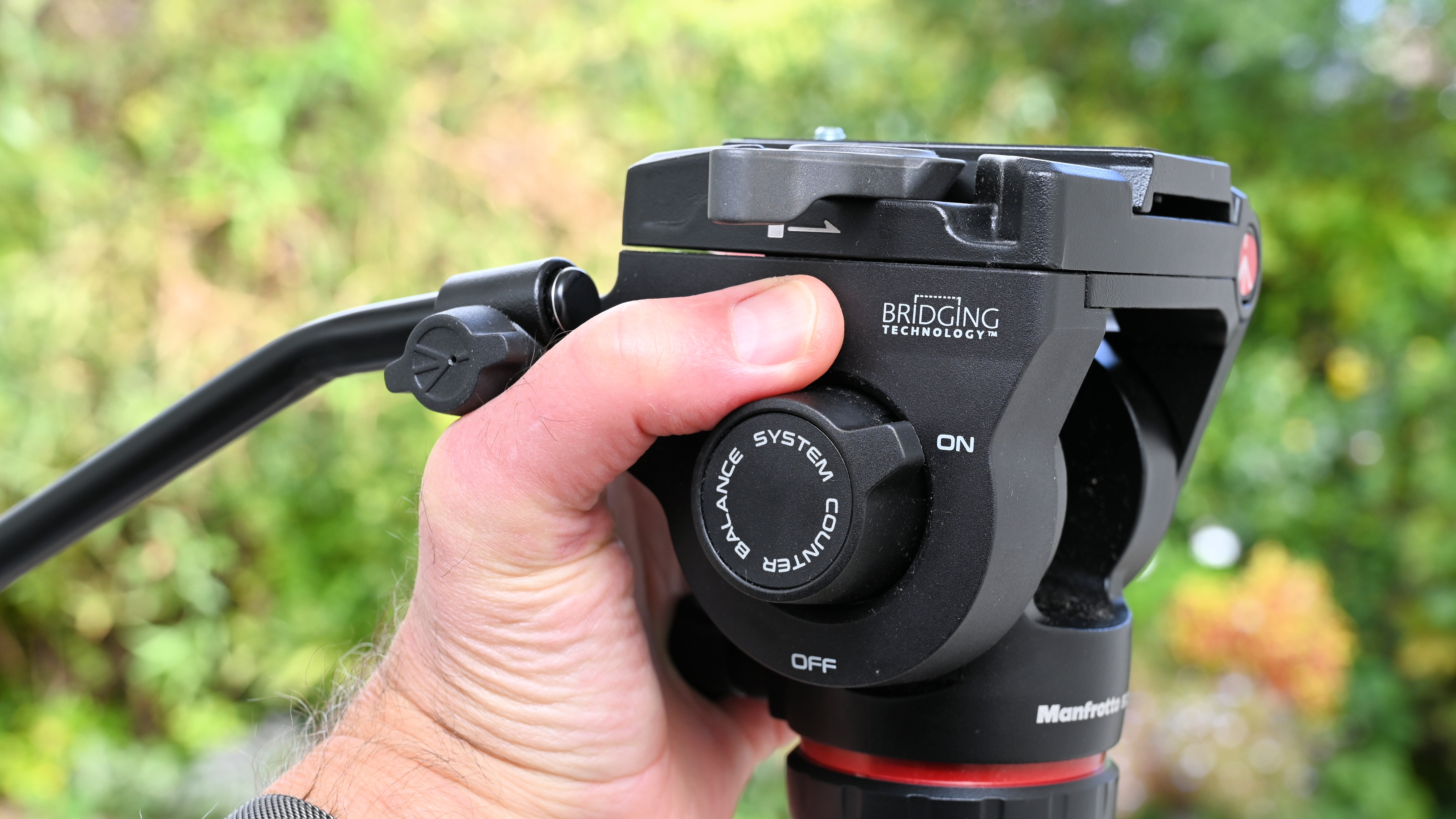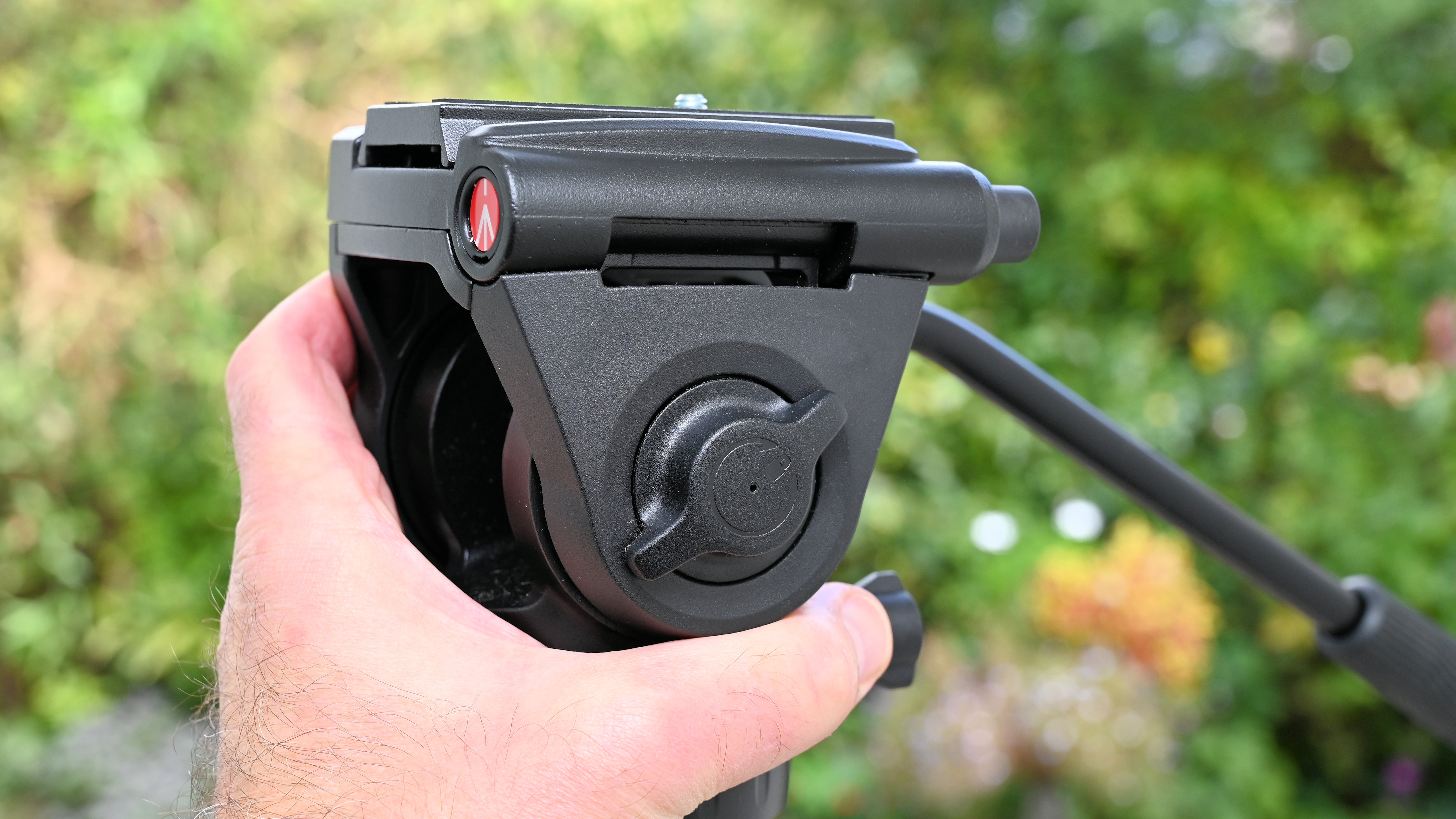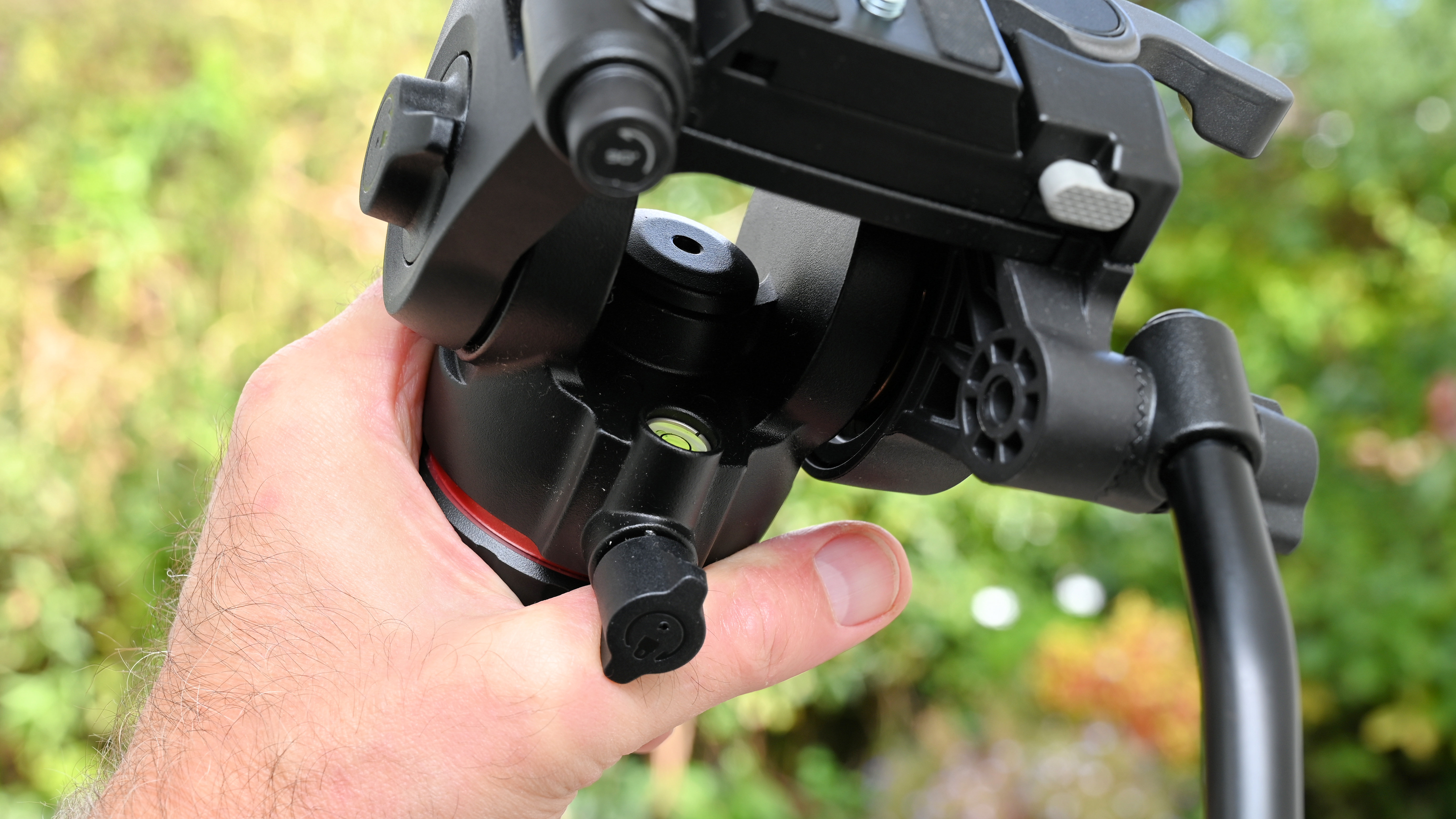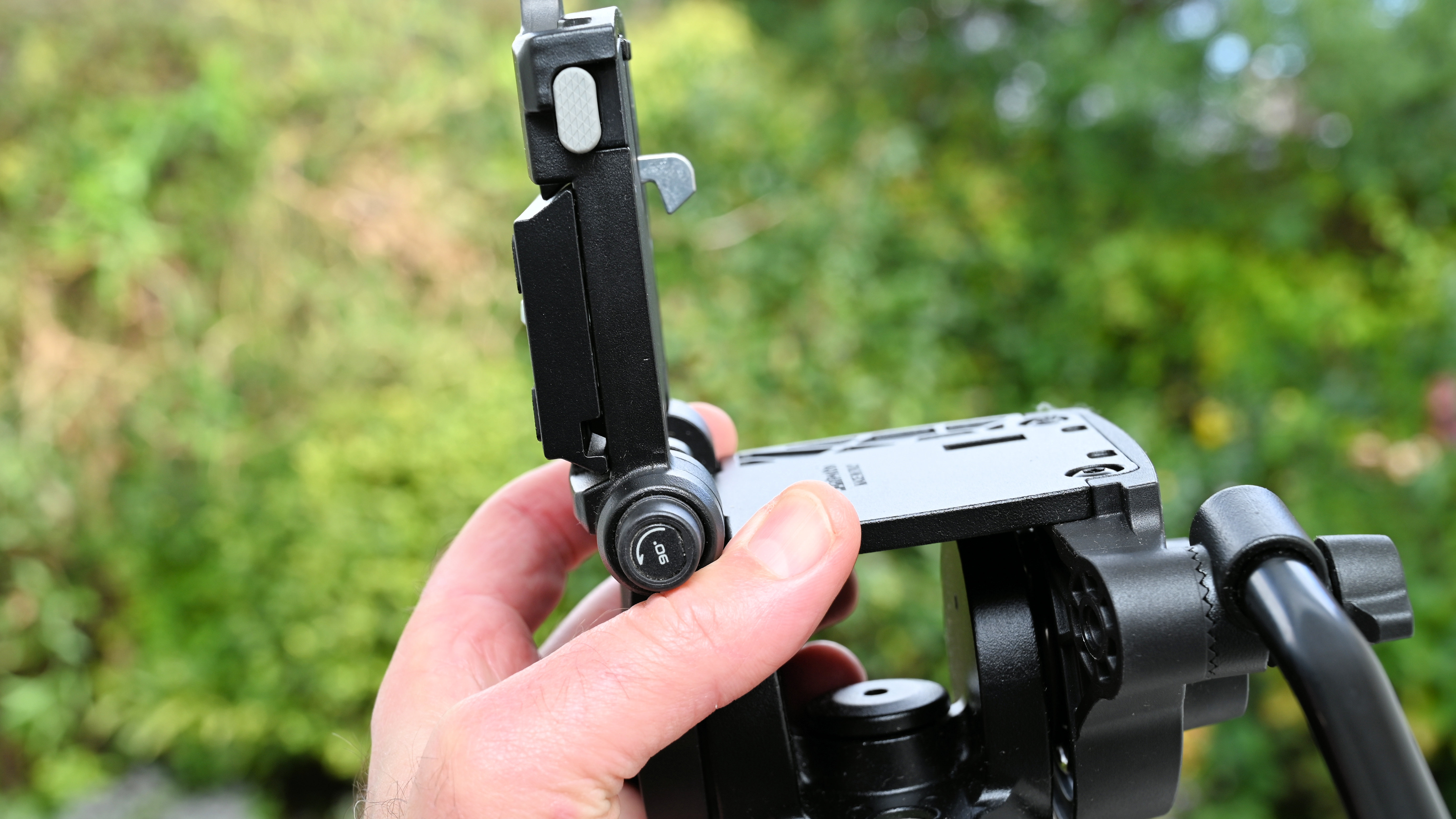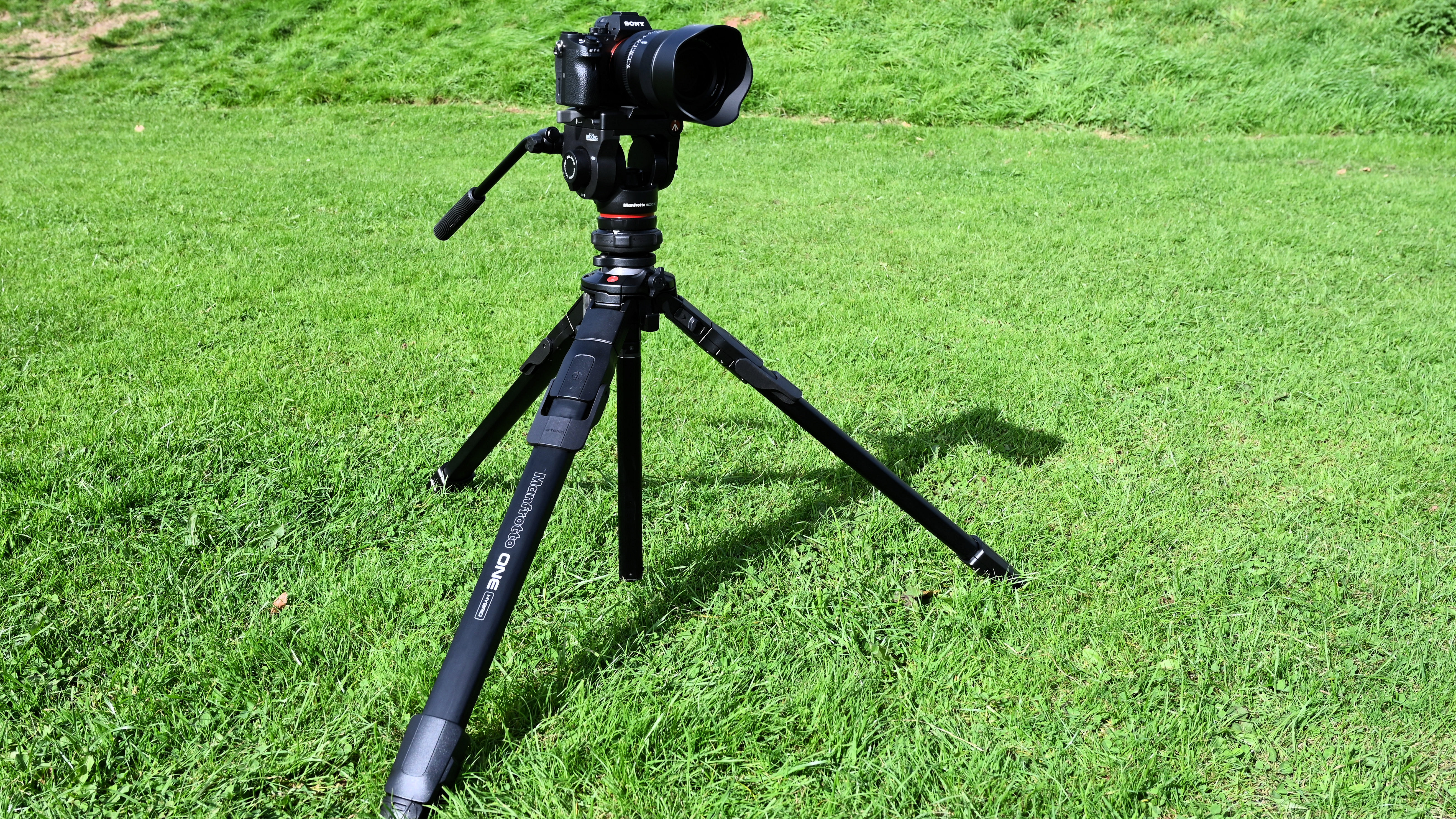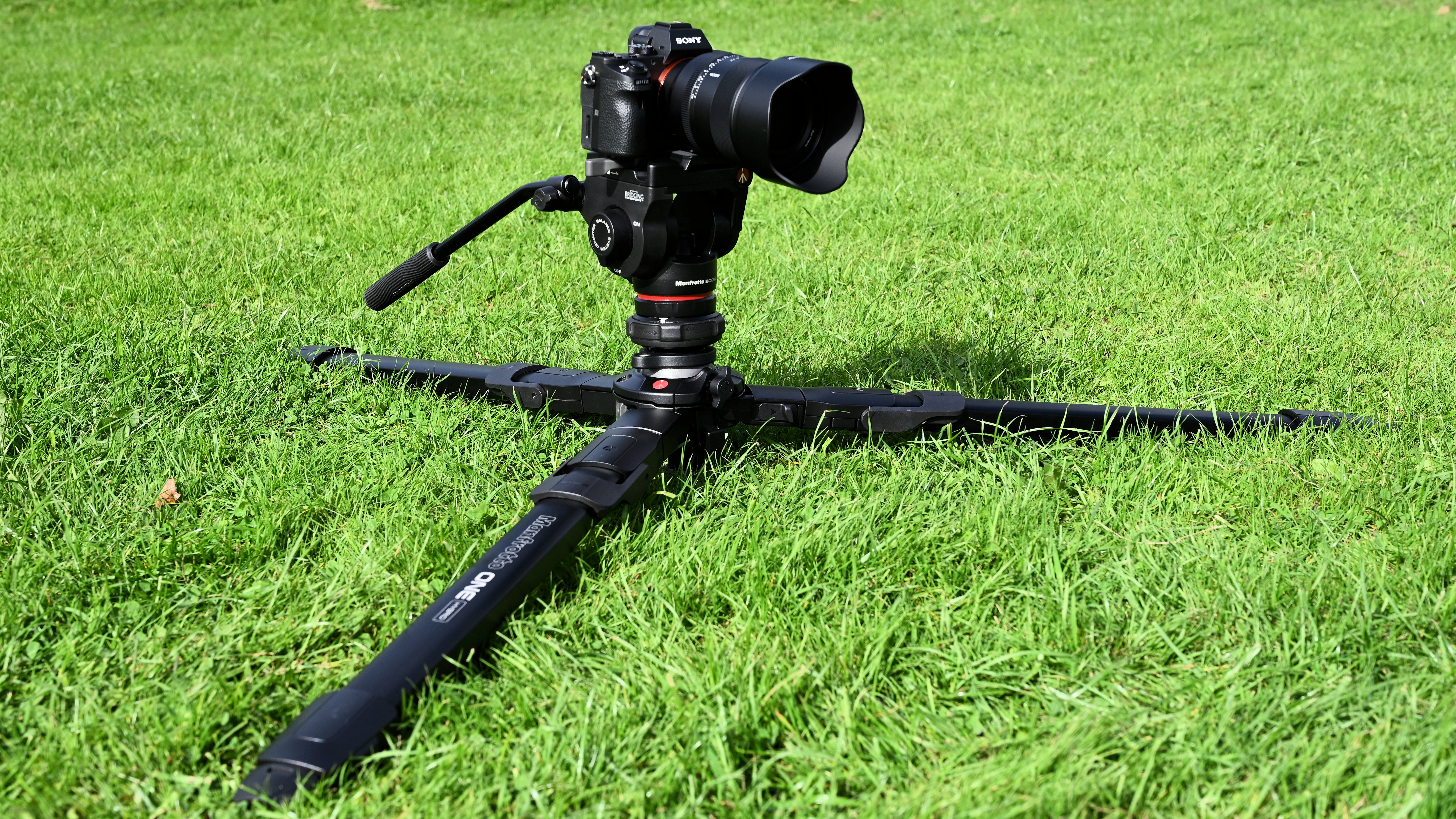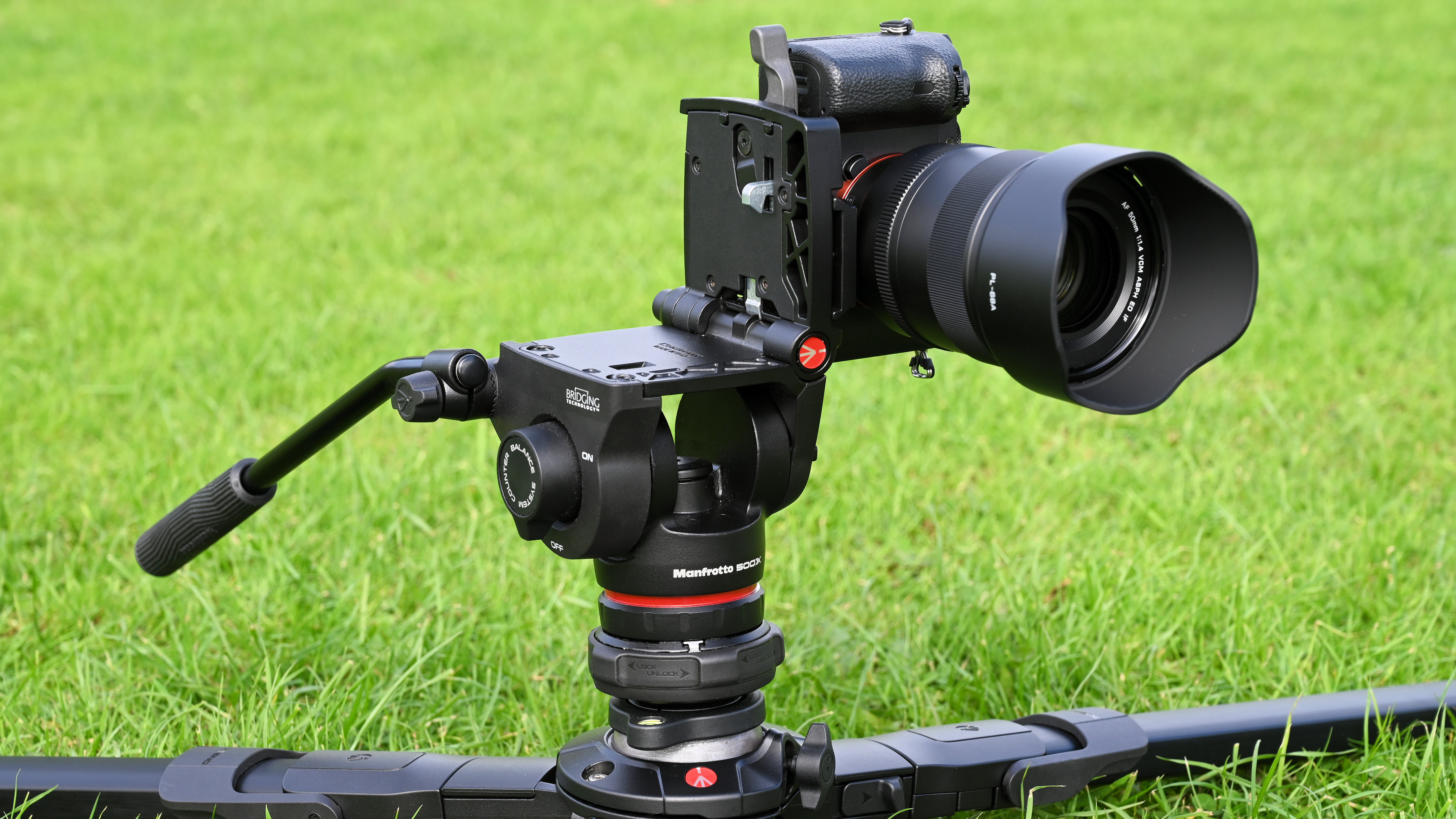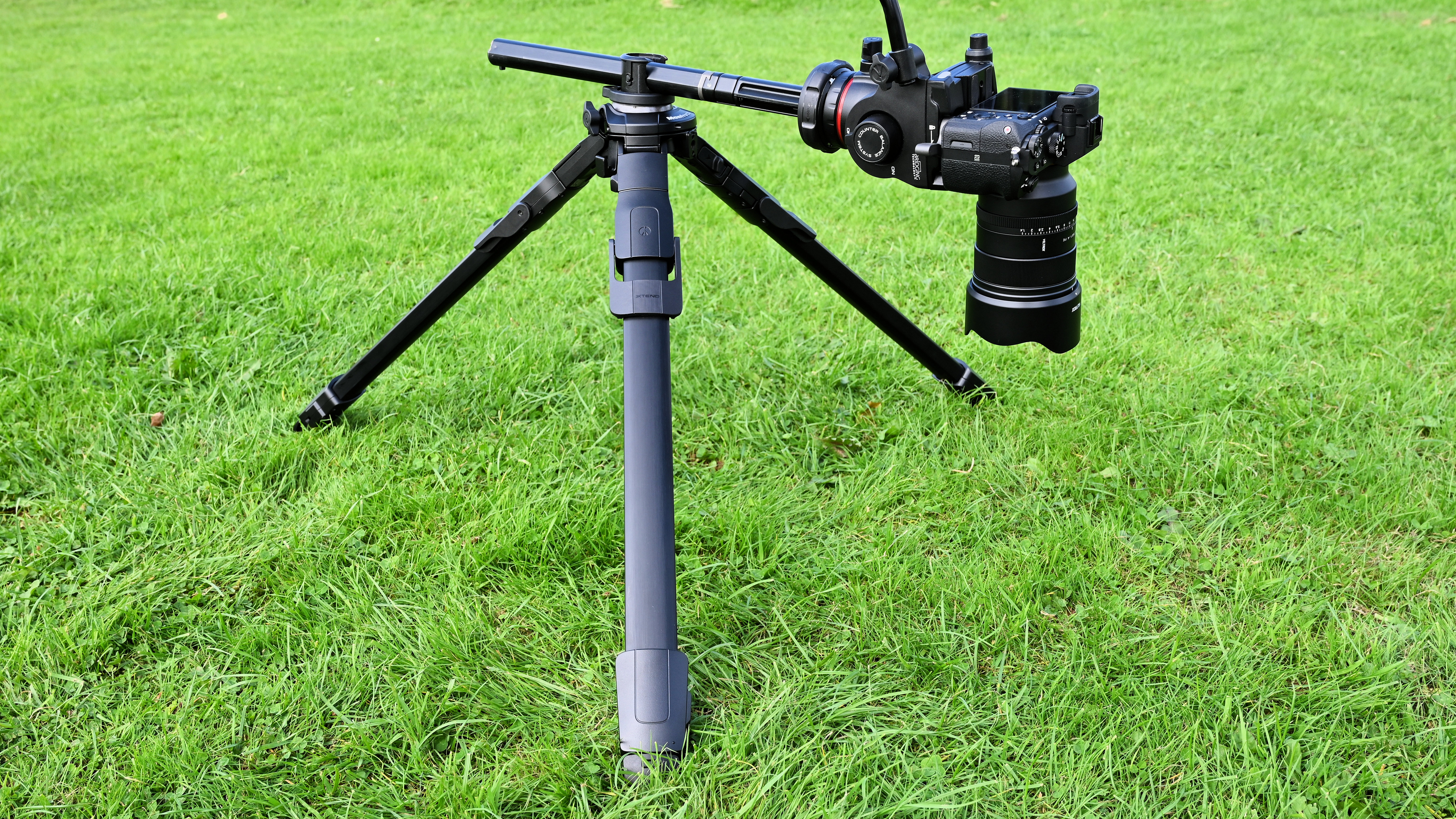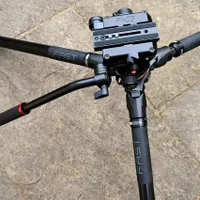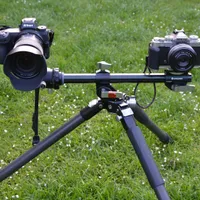Digital Camera World Verdict
I like that the Manfrotto One Hybrid tripod lives up to its claims and is genuinely a ‘hybrid’ tripod and ‘one’ bit of kit that’s equally excellent for shooting both stills and video. Sure, it’s a bit weighty but that helps it to stay well grounded when you’re tilting and panning for video gold. It’s amazingly quick and easy to set up, and supremely versatile. It’s also a bit on the pricey side but well worth the asking price.
Pros
- +
Hybrid head and legs
- +
‘Fast leg’ design
- +
Clever center column
- +
Quick-swap head system
Cons
- -
Necessarily chunky
- -
Only right-handed panning
- -
Pretty pricey
Why you can trust Digital Camera World
When it comes to tripods, Manfrotto is the first name that springs to my mind. The Italian company has become a legend in its own lifetime, creating some of the best sticks and heads on the market since the mid-1970s. The company was actually founded by photojournalist Lino Manfrotto in the 1960s, but started off making light stands and booms, moving into its mainstay of tripods a few years down the line.
The vast majority of tripods, past and present, cater either to stills photographers or to videographers. And there’s the problem. In these mirrorless days, there’s a host of ‘content creators’ wanting to make the most of everything on offer, inventing or reinventing themselves as hybrid shooters and capturing stills and video in equal measure. The Manfrotto One Hybrid tripod was created from the ground up, with and for content creators, aiming to be equally adept for shooting stills and video. As such, it aims to be not only one of the best tripods for photographers, but also one of the best tripods for videographers, and an all-in-one solution for those of us who shoot both.
Manfrotto One Hybrid Tripod: Specifications
Material | Aluminum or carbon fiber |
Folded height | 81cm / 31.9" |
Max operating height | 181cm / 71.3" |
Min operating height | 30.8cm / 12.1" |
Pivot center column | Yes, 90-degree |
Weight | 4.77kg / 10.52lb (Alu) 4.37kg / 9.63lb (CF) |
Load rating | 15kg / 33lb (legs) 5kg 11lb (head) |
Sections per leg | 3 |
Locking leg angles | 3 |
Feet | Modular rubber pads with spikes |
Manfrotto One Hybrid Tripod: Price
Pay your money and take your choice. There are four versions of the Manfrotto One Hybrid up for grabs, to suit varying needs and budgets. First up is the set of aluminum legs on their own, at $500 / £375 / AU$900. Add the Manfrotto 500X Fluid Head, which is an utterly perfect pairing for the legs in every way, and you’re looking at $680 / £519 / AU$1,200 for the complete kit.
Trade up to carbon fiber instead of aluminum, and the legs cost $720 / £539 / AU$1,250, or you can pay top dollar for the complete kit of legs and head at $880 / £669 / AU$1,500. The 500X head costs $220 / £164 / AU$390 on its own, so there’s a slight discount if you buy a complete kit. None of the options is exactly cheap, but you do get a good deal for your money.
Manfrotto One Hybrid Tripod: Design & Handling
Some say that you don’t need a tripod at all in this day and age of high-performance image stabilization, featured in both camera bodies and lenses. I completely disagree, finding a good tripod to be an essential aid for precisely composing critical stills shots and for long exposures, even more so for shooting video. What I’m a lot less keen on is needing to buy, store, and carry two different tripods, one for stills and one for video.
That said, I do tend to compromise to some extent by carrying one set of sturdy legs and swapping between a ball head or 3-way head for stills, and a fluid pan head for video. Even so, that’s still extra kit that you have to buy and carry, as well as enduring the chore of swapping between them. From the range of Manfrotto One Hybrid options, I opted for the set of aluminum legs, complete with 500X Fluid Head, which really does set out to answer every stills and video need in one package. The big question is, can this Manfrotto really pull it off and live up to its claims?
Unpacking the kit from its box, it’s already starting to look every inch a video tripod. There are some design elements that I’ve seen before, particularly in the Manfrotto 504X 635 Fast Single Leg Carbon video tripod. That was the first tripod I saw with Manfrotto’s ‘fast leg’ design. In that case, you twist the leg and all internal sections would release for expansion or contraction, after which you can tighten them all up again with another single twist in the opposite direction. The legs for the One Hybrid are equally ‘fast’ but this time have a single locking lever for each leg.
The best camera deals, reviews, product advice, and unmissable photography news, direct to your inbox!
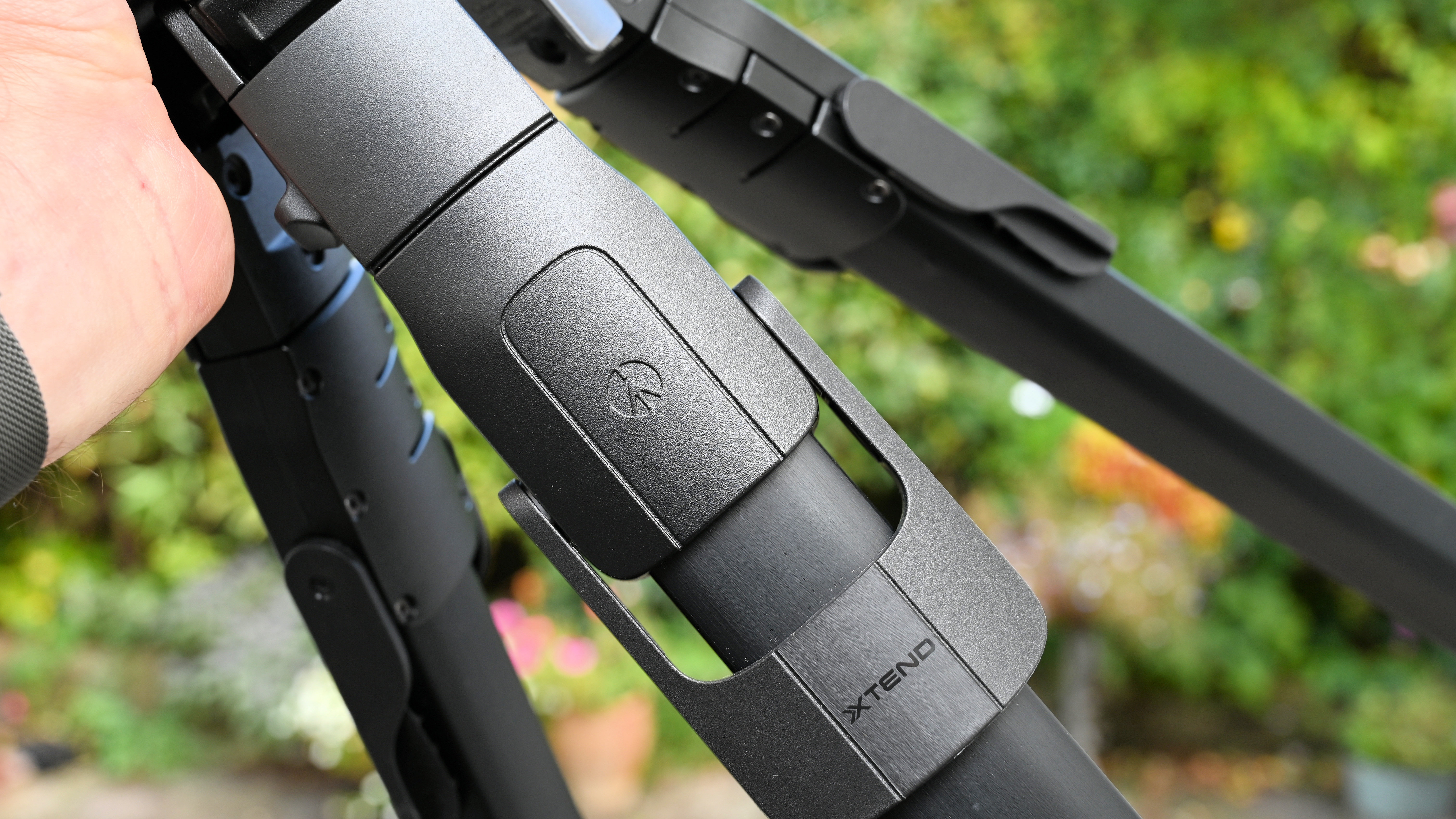
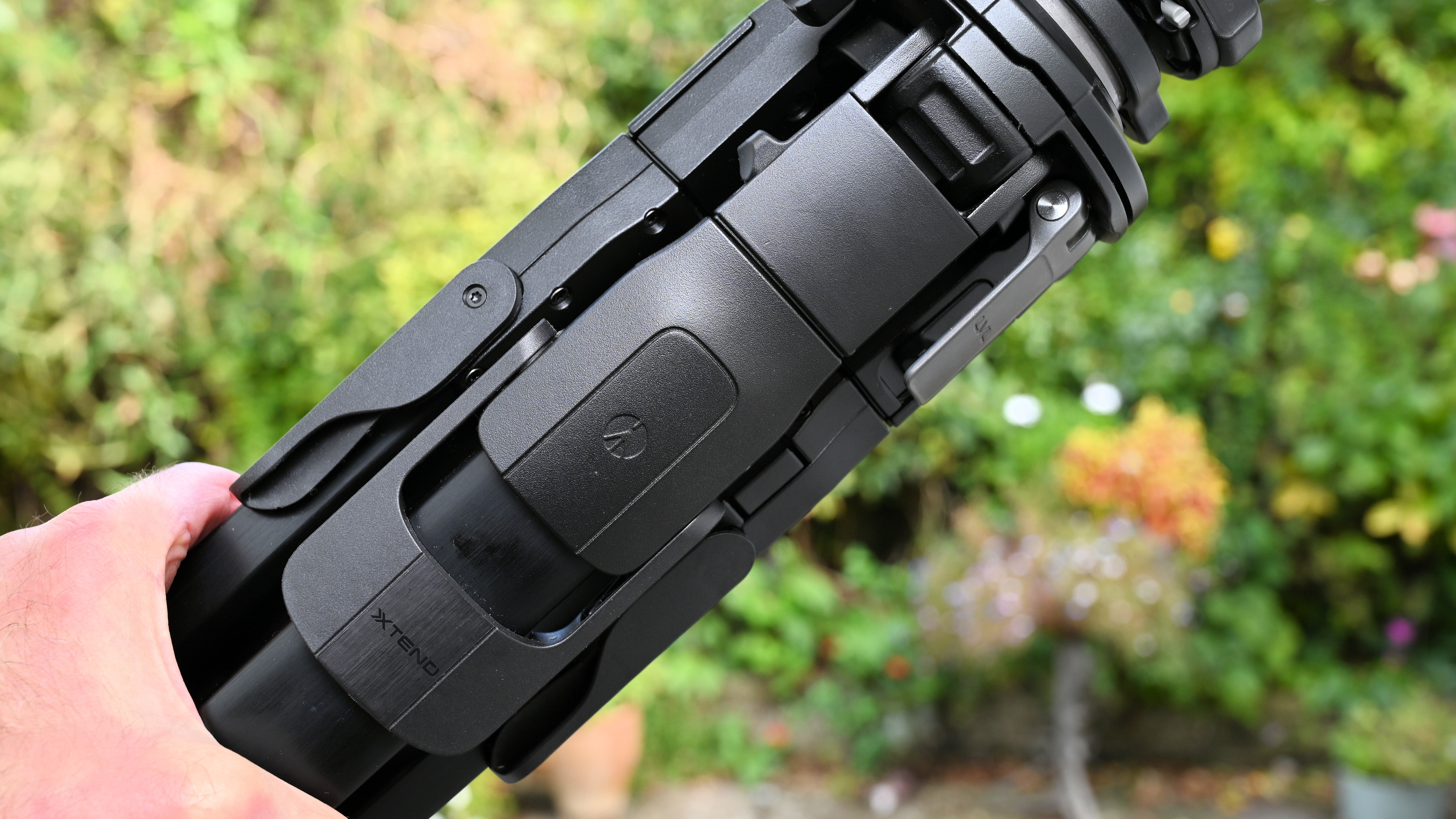
There are three sections in each leg, the central one having the largest profile. The medium thickness section extends from the top and the narrowest section from the bottom. Undo all of the locking levers (there’s one for each leg) and you can simply lift the tripod to your required operating height, jiggle it around until it’s approximately level, and then tighten each of the clamps again. One thing that I particularly like is that where most tripods have circular profile legs, this one uses oval profile legs, that make them more rigid, with more tortional resistance. This makes them less likely to bend and flex while you’re panning.
When I said about getting the tripod ‘approximately level’, the upside is that you don’t need to ensure the legs are absolutely level if you’re going to be panning for video or a sequence of stills. That’s because, like most video rather than stills tripods, this one features a leveling system so that you can ensure the base of the head is level. It’s an important point because, if you use adjustments in the head to compensate for the legs not being level, your camera will go on the skew when you start panning.
One aspect in which the tripod differs from most video tripods and is more like a stills tripod is that it has an extending center column. Naturally, this enables extra height, and, indeed, the tripod has a lofty maximum operating height of 181cm / 71.3", with the center column extended. But there’s more. As well as having a built-in leveling system, the column has a ‘Q90’ mechanism plus a modular design.
The Q90 is a trick bit of the kit that enables you to pivot the center column through 90 degrees and use it as a horizontal boom. It’s ideal for shooting directly downwards, for example, taking stills or video of objects laid out on the ground or on a tabletop. It’s also useful for shooting extreme close-ups and for use with ultra-wide-angle lenses, and is another reminder of features I’ve previously seen in Manfrotto tripods, like the Manfrotto 055 MT055CXPRO3.
Other highlights of the legs include an Easy Link socket with anti-rotation, ideal for adding an accessory arm and attaching the likes of an LED lamp, microphone, or video display monitor. There’s also a bubble level at the top of the legs, which you can freely rotate through 360 degrees to get it into the most convenient position.
At the very top of the legs is a Manfrotto Xchange system for easily swapping between different heads, and it works equally well for moving heads (and mounted cameras) between different supports. However, if you're going to use the One with the 500X Fluid Head permanently, then you don't need to use the Xchange plate at all, and in fact, Manfrotto recommends removing it entirely. Nevertheless, it's handy to have, and I’ve seen something similar, in the shape of the excellent Manfrotto MOVE Quick Release System, which I’ve invested in for some of my personal sets of legs and heads. With both systems, you can simply twist a locking ring, then pop the head off the tripod, and snap it onto another one, or place a different head on your legs. It really couldn’t be any quicker or easier.
Enough talk of legs. Let’s get into the 500X Fluid Head. It’s pretty chunky, which I like as it gives a sense of solidity and robustness. I’ll start off with my one and only criticism, which is that the supplied panning handle only fits on the right-hand side, whereas most video tripod heads enable you to fit the handle on the right or left-hand side, depending on your preference.
Back on the positive side, the head features a counterbalance system, which you can engage or disengage with a knob on the side. When engaged, it has a set counterbalance weight of 2.4kg / 5.29lb. In practice, I found it worked well with a variety of different camera and lens combinations.
Shift over to the left-hand side of the head, and there’s a locking/release knob for forward and backward vertical tilt. It’s something that’s equally necessary for stills and video, and I’m pleased that it has a generous range of movement, equating to almost 180 degrees and enabling vertical downward shooting, even without pivoting the center column.
Around the back is the lock/release knob for panning, which is equally necessary for both stills and video. Just above this knob is a bubble level built into the head, which you can use in conjunction with the one in the legs.
One thing that’s lacking in video heads is a 90-degree swivel facility. That can be a critical problem if you want to shoot stills in portrait orientation mode. The ‘hybrid’ nature of the Manfrotto comes to the fore again, this time with a release button that enables you to pivot the camera platform through 90 degrees for portrait-orientation shooting. So there you have it – true hybrid functionality.
Manfrotto One Hybrid Tripod: Performance
Sometimes time is of the essence, particularly if you’re shooting stills and video at events like weddings and sporting occasions. I find that the ‘fast legs’ live up to their billing, making it very quick and easy to set up the tripod at the height I require. Similarly ensuring the tripod is completely level also proves quick and simple, thanks not only to the fast leg latches but also to the leveling mechanism for the center column.
For creative effect, I often like to shoot both stills and video from ultra-low angles. The Manfrotto obliges with its modular center column. A simple release catch makes it easy to slide off the bottom section of the center column and remove it completely, enabling use of the legs’ widest angular setting.
I found that the tripod gave me the perfect blend of solid support and fluid movement when shooting video. I was also pleased that it proved really solid and sturdy for stills, being very resistant to any unwanted flexing or vibration. For portrait orientation shooting, you might prefer using one of the best L-brackets currently available. If not, the ability to quickly swivel the camera through 90 degrees can be vital for stills.
Dedicated video tripods rarely feature a center column. That can be a limiting factor if you need to shoot from a lofty height. I’m pleased that the Manfrotto not only features a center column, but that it also has a pivot feature, which is ideal for shooting vertically downwards over a table and for various other scenarios. All in all, this ‘hybrid’ tripod can do pretty much anything, and in fine style.
Manfrotto One Hybrid Tripod: Verdict
Hybrid creations have quite a history, from mules to automobiles, and you can often make things better if you mix them up a bit. There’s a joke here… What do you get if you cross a dinosaur with a pig? Jurassic pork! Sorry, back to the business at hand. The Manfrotto One Hybrid tripod is genuinely different from other tripods that I’ve seen, used, tested, and reviewed before. And I’ve seen a lot.
It really is ‘one’ tripod that’s a true ‘hybrid’, making it a dual-purpose tool for both stills and video. It’s quick and easy to set up, simple to use, and combines super-steady support with wonderfully fluid movement. I’d definitely go for one of the aluminum or carbon fiber full kits that includes the head, as the two go so brilliantly well together. The complete kits really are more than the sum of their parts. They’re all pretty pricey to buy but are still very good value, considering their design, features, and performance.
Features ★★★★★ | Exhaustive features include ‘fast legs’, a leveling, sliding, modular and pivoting center column, quick-change Xchange system, and more besides. |
Design ★★★★★ | The design is inordinately clever, resulting in a truly hybrid tripod that can turn its hand (or its head) to pretty much anything. |
Performance ★★★★★ | Performance is excellent, combining superb stability and resistance to flexing and vibrations with smooth and silky ‘fluid’ movement. |
Value ★★★★☆ | The kits certainly aren’t cheap, but considering you’re kinda getting two tripods in one, it’s very good value. |
Alternatives
The Manfrotto 504X 635 Fast Single Leg Carbon video tripod is more of a specialist video tripod and less suitable for stills. That said, you can certainly shoot stills with it, although an L-bracket would come in handy.
The Vanguard VEO 3+ 303CBS is billed as being one of the company’s most versatile tripods ever. It comes has a pivoting center column and a neat range of extras that enables mounting two cameras rather than just one.
Matthew Richards is a photographer and journalist who has spent years using and reviewing all manner of photo gear. He is Digital Camera World's principal lens reviewer – and has tested more primes and zooms than most people have had hot dinners!
His expertise with equipment doesn’t end there, though. He is also an encyclopedia when it comes to all manner of cameras, camera holsters and bags, flashguns, tripods and heads, printers, papers and inks, and just about anything imaging-related.
In an earlier life he was a broadcast engineer at the BBC, as well as a former editor of PC Guide.
You must confirm your public display name before commenting
Please logout and then login again, you will then be prompted to enter your display name.

